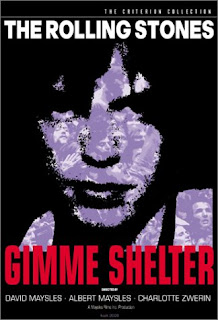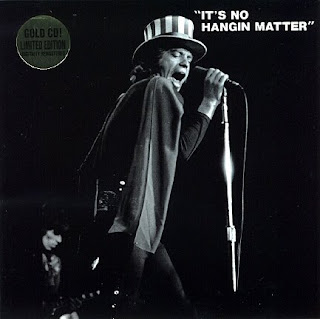Oh, a storm is threatning
My very life today
If I dont get some shelter
Oh yeah, Im gonna fade away
Its just a shot away
War, children, its just a shot away
Its just a shot away
Our very street today
Burns like a red coal carpet
Mad bull lost its way
War, children, its just a shot away
Its just a shot away
War, children, its just a shot away
Its just a shot away
Rape, murder!
Its just a shot away
Its just a shot away
Rape, murder!
Its just a shot away
Its just a shot away
Rape, murder!
Its just a shot away
Its just a shot away

The floods is threatning
My very life today
Gimme, gimme shelter
Or Im gonna fade away
War, children, its just a shot away
Its just a shot away
Its just a shot away
Its just a shot away
Its just a shot away
I tell you love, sister, its just a kiss away
Its just a kiss away
Its just a kiss away
Its just a kiss away
Its just a kiss away
Kiss away, kiss away
Directed by David Maysles, Albert Maysles and Charlotte Zwerin
Filmed by the Maysles Brothers
Key Cast: Mick Jagger, Keith Richards, Mick Taylor, Charlie Watts, Bill Wyman
Uncredited Cast: Marty Balin, Melvin Belli, Dick Carter, Sam Cutler, Jerry Garcia, John Jaymes, Paul Kantner, Michael Lang, Phil Lesh, Ron Schneider, Grace Slick, Tina Turner, Bob Weir
Music Credits:
Rolling Stones: Jumping Jack Flash, (I Can’t Get No) Satisfaction, You Gotta Move, Wild Horses, Brown Sugar, Love In Vain, Honky Tonk Woman, Street Fighting Man, Sympathy For The Devil, Under My Thumb, Gimme Shelter
Ike & Tina Turner: I’ve Been Loving You Too Long
The Flying Burrito Brothers: Six Days On The Road
Jefferson Airplane: The Other Side Of This Life
(Colour, 1970) Running Time: 91 min.
Format: Original 1.33:1 Aspect
Audio: Dolby Digital and DTS 5.1 surround sound
22 cameramen, including a young George Lucas, and 14 Nagra-toting soundmen.
*Los shows del Madison de esta gira acabaron editándose en el álbum en directo Get Yer Ya-Ya’s Out!
Director/Film Editor Charlotte Zwerin has to be given credit for the film’s fascinating structure. In a flash of genius she asked members of The Stones to drop round her editing suite and check out the raw footage. They agreed, and cameras were set up to catch their reactions. Suddenly the film metamorphs from a documentary into something else, something doubly voyeuristic.
This structure, this self-referential mirror, is also the perfect way for The Stones to deflect charges that they were responsible for the Altamont concert, which not only filled the void with bad vibes but which wiped out all the good vibes of Woodstock,(four months earlier).


El título de la película: Gimme Shelter - dame refugio - haciendo alusión a la tan conocida canción homónima de la banda y la letra que pareciera estar consciente de lo que el destino deparaba, como mandada a hacer para el documental.
Los Rollings en el estudio, en concierto, pero más que un testimonio de los Rolling Stones, un testimonio de una época, de una juventud, del comienzo de conciertos másivos.
El asesinato, la escena más polémica del documental, visto desde una segunda cámara, apreciado en slow-motion. El ángel del demonio apuñalando a un chico negro que apuntaba una pistola al escenario, hacia un grupo de ángeles del demonio. Una novia destrozada que llora en brazos de un amigo mientras mira como suben a su hombre a la ambulancia. El cruel despertar después de un viaje alucinante en música y sustancias ilegales. Mick jagger mirando el video. Nosotros mirando a Mick Jagger mirarse en el concierto que veíamos unos instantes antes. El asesinato visto a través de la expresión de Jagger y en realidad con eso basta para empatizar y sentir la misma frustración: la frustración de un músico que lo único que quería era compartir su música en armonía con su público, disfrutar de la vida cantando, pero que tuvo que enfrentarse con la realidad de una juventud que no estaba preparada para el reto, para la responsabilidad que implicaba su ofrecimiento.
Gran documental y en realidad no hay mucho que agregar, basta verlo para notarlo.


David and Albert Maysles. Pioneros del Direct Cinema.
En palabras de Albert:
For me the greatest technical innovation is the Sony PD170 because it:
1. focuses down to inches.2. has a magnificent manual zoom.
3. is supersensitive to light.
4. an excellent zoom range especially with the addition of the Century wide-angle adapter.
5. only 3 dollars per tape.
6. extremely useful automatic focus, also manual.
7. manual and automatic exposure control.
8. single system picture and sound plus two sound inputs.
9. as you shoot, you control exposure simultaneously while observing recorded images.
10. steady device in the lens makes for a steadier picture.
11. unlike the 10minutes 16mm film camera magazine, each tape runs 40 or 60 minutes, virtually no run-outs.
12. with tape you needn’t change stock.
13. camera can be held in many positions with viewer still visible.
14. holding camera below chin, a camera person can see much more than is in the eyepiece.
15. holding camera below chin, camera person's gaze is available to subjects to assure rapport.
16. camera much lighter (only 3 or 4 pounds vs.20).
17. can vary shutter speed.
18. camera costs only around $3500; a 16mm film camera with lenses and
magazines around $100,000.
19. the zoom lens is so good you need no other lenses.
20. easy to film in tight quarters; for example, in cars.
21. totally silent.
22. less intrusive.
23. batteries are tiny (3"x 1 1/2"x 1"), weigh little, run for as much as 8 hours.
24. quality satisfactory for TV and can be blown up to 35mm.
25. all you need to shoot goes into a normal camera bag.
26. when necessary can shoot all alone.
27. no waiting a day for rushes. Results are immediately available.
28. fewer or no problems with hot or humid conditions.
29. can go straight to edit; no processing negative, workprint, or transfer to tape.
30. is a near perfect one-up on the 16mm film camera.
Hablando del documental:
Why
As a documentarian I happily place my fate and faith in reality. It is my caretaker, the provider of subjects, themes, experiences—all endowed with the power of truth and the romance of discovery. And the closer I adhere to reality the more honest and authentic my tales. After all, knowledge of the real world is exactly what we need to better understand and therefore possibly to love one another. It’s my way of making the world a better place.
How
1. Distance oneself from a point of view.
2. Love your subjects.
3. Film events, scenes, sequences; avoid interviews, narration, a host.
4. Work with the best talent.
5. Make it experiential, film experience directly, unstaged, uncontrolled.
6.There is a connection between reality and truth. Remain faithful to both.
Some Do's and Dont's
• Use manual zoom, not the electronic.
• Read as much of the PD 170 manual as you can.
• Read book or chapter in a photography book on how to compose shots.
• Use the steady device that’s in the camera.
• Never use a tripod (exception: filming photographs, for example).
• You’ll get a steadier picture the more wide-angle the shot. In a walking shot go very wide angle.
• Hold the beginning and end of each shot. The editor will need that.
• Use no lights. The available light is more authentic.
• Learn the technique but equally important keep your eye open to watch the significant moment. Orson Welles: “The cameraman’s camera should have behind its lens the eye of a poet.”
• Remember, as a documentarian you are an observer, an author but not a director, a discoverer, not a controller.
• Don’t worry that your presence with the camera will change things. Not if you’re confident you belong there and understand that in your favor is that of the two instincts, to disclose or to keep a secret, the stronger is to disclose.
• It’s not “fly-on-the-wall”. That would be mindless. You need to establish rapport even without saying so but through eye contact and empathy.



Requisistos para ser aceptado como miembro:
-Licencia de conducir.
-Motocicleta
-No ser pederasta
-No haber aplicado ni trabajado como guardia de prisión o policia.
No podíamos hablar de los Rolling Stones sin mencionar One plus One, mejor conocida como Sympathy for the Devil de Godard (1968).
"Probablemente, One plus One sea el registro más fiel y minucioso de la génesis de una canción. De manera paciente, casi antropológica, Jean Luc Godard registró los interminables ensayos en que los Rolling Stones dieron forma a Sympathy for the Devil, incluída después en el album Beggar's Banquet (Decca, 1968).
La idea de Godard consistía en filmar dos películas diferentes: el documental de los Stones y las fantasías militantes, y editarlas conjuntamente: un rollo de la primera, un rollo de la segunda. De ahí el título. Según Godard, "One plus One (Uno más Uno) no significa uno más uno igual dos. Significa sólo eso: One plus One..."; por lo cual el espectador esta obligado a tomar los fragmentos sueltos y, si tiene ganas e imaginación, editarlos en su propia mente, darles el significado que el film escamotea."
- Godard
(hablando sobre Albert Maysles.)
Arriba Patti Smith cantando el cover de Gimme Shelter.
FUENTES:
- Rockenberg's. Gimme Shelter. http://rockenberg.wordpress.com/2008/11/08/the-rolling-stones-gimme-shelter/
- Youtube. Patti Smith Gimme Shelter. http://www.youtube.com/watch?v=EAGmuxPAD_4
- Youtube. Sympathy for the Devil-Godard-Stones. http://www.youtube.com/watch?v=pc3f8L7Ruuk
- http://www.henciclopedia.org.uy/autores/Buela/oneone.htm
- Rick Ojo McGrath. Gimme Shelter. http://www.culturecourt.com/Ajo/media/GShelter.htm
- Wikipedia. The Free Encyclopedia. Hell's Angels. http://en.wikipedia.org/wiki/Hells_Angels
- Henciclopedia. One plus One. http://www.henciclopedia.org.uy/autores/Buela/oneone.htm
- Maysles Films. http://www.mayslesfilms.com/companypages/albertmaysles/note.htm

















No hay comentarios:
Publicar un comentario